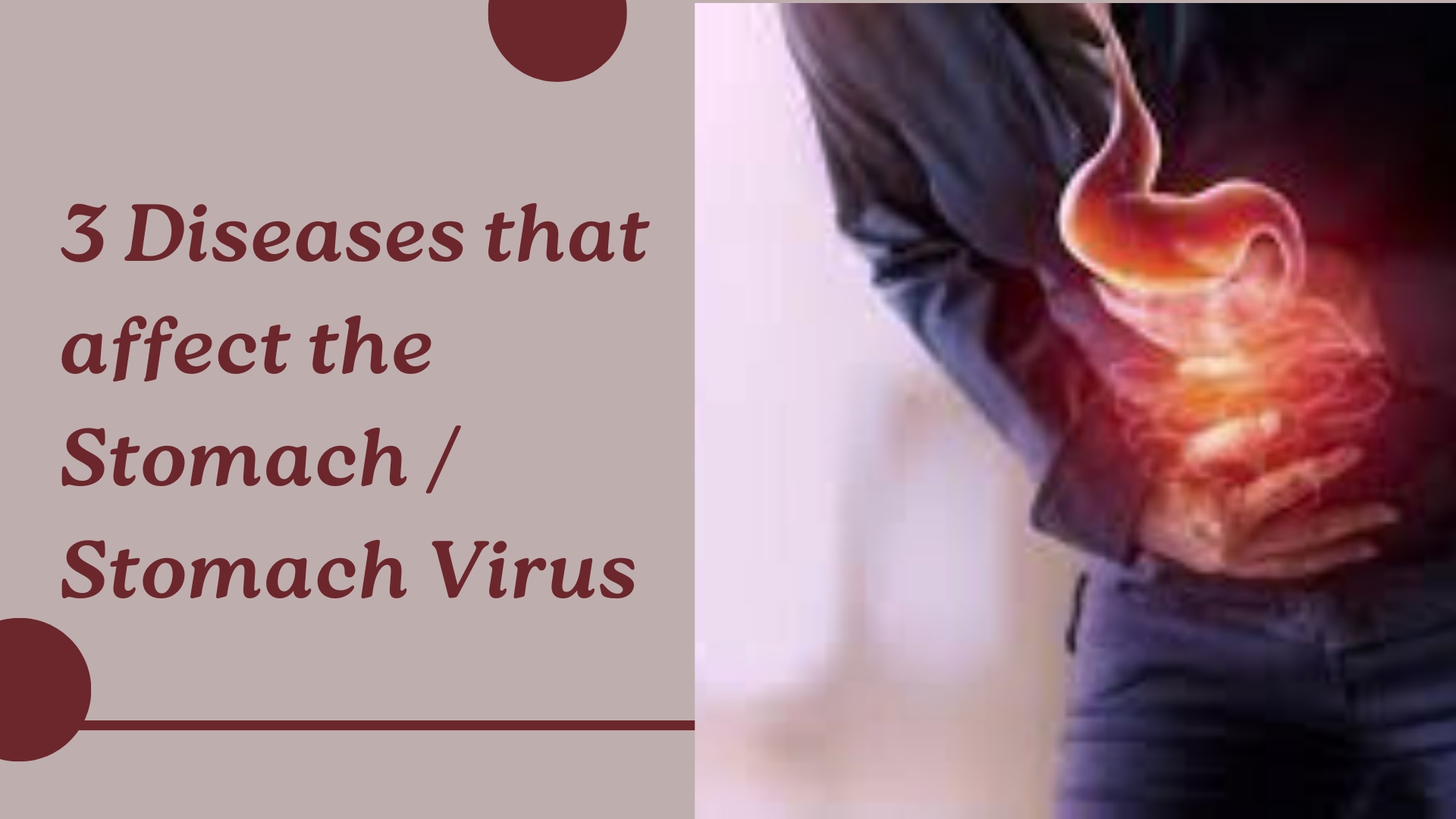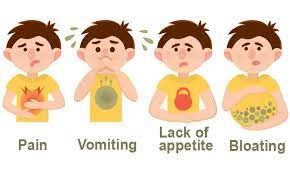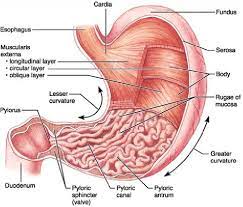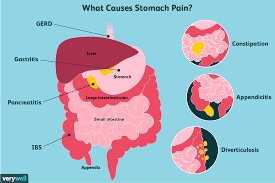Welcome to (International Stories). In this story, we will discuss 3 Diseases that affect the Stomach / Stomach Virus. I hope you will like this article.
3 Diseases that affect the Stomach / Stomach Virus
Three diseases that can affect the stomach are:
- Gastritis: Gastritis refers to the inflammation of the stomach lining. It can be caused by various factors such as infection (usually by Helicobacter pylori bacteria), excessive alcohol consumption, prolonged use of nonsteroidal anti-inflammatory drugs (NSAIDs), stress, or autoimmune disorders. Symptoms of gastritis may include abdominal pain, nausea, vomiting, indigestion, bloating, and loss of appetite.
- Peptic Ulcer Disease: Peptic ulcer disease involves the formation of open sores or ulcers in the lining of the stomach (gastric ulcers) or the upper part of the small intestine (duodenal ulcers). The primary cause of peptic ulcers is infection with Helicobacter pylori bacteria or the use of nonsteroidal anti-inflammatory drugs (NSAIDs) such as aspirin or ibuprofen. Symptoms may include abdominal pain, bloating, heartburn, nausea, vomiting, and weight loss.
- Gastroenteritis: Gastroenteritis, also known as stomach flu, is an infection or inflammation of the gastrointestinal tract, including the stomach and intestines. It can be caused by viruses (such as norovirus or rotavirus), bacteria (such as Escherichia coli or Salmonella), or parasites. Gastroenteritis is often characterized by symptoms like diarrhea, abdominal pain, nausea, vomiting, fever, and dehydration.
There are numerous other diseases and conditions that can affect the stomach. If you suspect you have any stomach-related issues, it is important to consult a healthcare professional for an accurate diagnosis and appropriate treatment.
Stomach
The stomach is a muscular organ located in the upper abdomen, on the left side of the body. It plays a crucial role in the digestive system by receiving and processing food that has been swallowed. The main functions of the stomach include:
- Storage: The stomach acts as a temporary reservoir for food. It receives chewed food from the esophagus and stores it until it is ready to be further digested and passed into the small intestine.
- Mechanical Digestion: The stomach helps break down food mechanically through the churning and mixing actions of its muscular walls. These contractions, known as peristalsis, help to mix the food with digestive juices and break it down into smaller particles.
- Chemical Digestion: The stomach secretes gastric juice, which contains digestive enzymes and hydrochloric acid. These substances help to break down proteins and kill bacteria present in the food. The acidic environment created by the stomach’s secretions also activates the enzyme pepsin, which begins the digestion of proteins.
- Absorption: While most of the absorption of nutrients takes place in the small intestine, the stomach can absorb certain substances, such as water, electrolytes, and some medications (e.g., alcohol and aspirin).
Some common issues or conditions related to the stomach include:
- Gastritis: Inflammation of the stomach lining, often caused by infection, excessive alcohol consumption, prolonged use of nonsteroidal anti-inflammatory drugs (NSAIDs), or certain autoimmune conditions.
- Peptic Ulcers: Open sores that develop on the lining of the stomach or the upper part of the small intestine. They can be caused by infection with Helicobacter pylori bacteria, long-term use of NSAIDs, or excessive acid production.
- Gastroesophageal Reflux Disease (GERD): A chronic condition where stomach acid flows back into the esophagus, causing symptoms like heartburn, chest pain, and regurgitation. It is commonly known as acid reflux.
- Stomach Cancer: A malignant tumor that develops in the lining of the stomach. It is often asymptomatic in the early stages but can cause symptoms like abdominal pain, unintentional weight loss, and digestive problems in later stages.
It’s important to note that if you have any concerns about your stomach health or experience persistent digestive symptoms, it is advisable to consult a healthcare professional for an accurate diagnosis and appropriate treatment.
A stomach virus, also known as viral gastroenteritis or the stomach flu, is an infection that causes inflammation of the stomach and intestines. It is typically caused by a variety of viruses, most commonly norovirus or rotavirus.
Symptoms of a stomach virus usually include:
- Nausea and vomiting: This is one of the most common symptoms and can occur several times in a short period.
- Diarrhea: Watery or loose stools may occur, sometimes accompanied by abdominal cramps.
- Abdominal pain and cramps: These can range from mild to severe and may be intermittent or persistent.
- Fever: Some individuals may experience a low-grade fever, although it is not always present.
- Fatigue: Feeling tired and weak is common during the illness.
- Headache and muscle aches: These symptoms may accompany the gastrointestinal symptoms.
Stomach viruses are highly contagious and can spread through close contact with an infected person, consuming contaminated food or water, or touching contaminated surfaces and then touching the mouth or face. The illness usually lasts for a few days to a week, and most people recover without any specific treatment.
To manage a stomach virus, it is essential to stay hydrated by drinking plenty of fluids, such as water, clear broths, or electrolyte solutions. Avoiding solid foods and sticking to a bland diet (e.g., rice, toast, bananas, and applesauce) can help ease symptoms. It is important to rest and avoid close contact with others to prevent spreading the virus. Over-the-counter medications like anti-diarrheals or anti-nausea medications can be used to alleviate specific symptoms, but it’s advisable to consult a healthcare professional before taking any medication, especially for young children or individuals with pre-existing medical conditions.
If symptoms worsen or persist for an extended period, it is advisable to seek medical attention. Additionally, if you suspect you have contracted a stomach virus, it is crucial to practice good hygiene, such as frequent handwashing with soap and water, to prevent spreading the virus to others.
Stomach pain
I can try to provide some general information about stomach pain. Stomach pain can have various causes, ranging from minor issues to more serious conditions. Some possible causes of stomach pain include:
- Indigestion: Overeating, consuming spicy or fatty foods, or eating too quickly can lead to indigestion, which can cause discomfort in the stomach.
- Gastritis: Inflammation of the stomach lining, often caused by infection, excessive alcohol consumption, long-term use of certain medications, or stress.
- Gastroenteritis: Commonly known as the stomach flu, gastroenteritis is an infection of the stomach and intestines, typically caused by a virus or bacteria. It can lead to stomach pain, nausea, vomiting, and diarrhea.
- Peptic ulcers: These are sores that develop on the lining of the stomach or upper small intestine, often due to an infection with Helicobacter pylori bacteria or long-term use of nonsteroidal anti-inflammatory drugs (NSAIDs).
- Irritable bowel syndrome (IBS): A chronic disorder that affects the large intestine, causing symptoms like abdominal pain, bloating, and changes in bowel movements. The exact cause of IBS is unknown.
- Appendicitis: Inflammation of the appendix, which is a small pouch located in the lower right abdomen. Appendicitis typically causes severe pain that starts around the belly button and moves to the lower right side of the abdomen.
- Gallstones: Hardened deposits that form in the gallbladder, often causing pain in the upper abdomen, particularly after eating fatty foods.
It’s important to note that stomach pain can be a symptom of many different conditions, and it’s best to consult a healthcare professional for an accurate diagnosis and appropriate treatment. They can evaluate your symptoms, perform any necessary tests, and provide personalized advice.
Stomach cancer, also known as gastric cancer, can present a variety of symptoms. It’s important to note that these symptoms can be caused by other conditions as well, so it’s crucial to consult with a healthcare professional for an accurate diagnosis. Common symptoms of stomach cancer include:
- Abdominal pain or discomfort: Persistent pain or discomfort in the abdomen, often felt in the upper abdomen.
- Indigestion or heartburn: Recurring indigestion, heartburn, or discomfort after eating.
- Loss of appetite: A decreased desire to eat or feeling full quickly, even with small meals.
- Unexplained weight loss: A significant and unintentional loss of weight without an apparent cause.
- Nausea and vomiting: Persistent nausea, sometimes accompanied by vomiting.
- Difficulty swallowing: Sensation of food getting stuck or difficulty swallowing, also known as dysphagia.
- Feeling bloated or having a sense of fullness: Abdominal bloating, which may occur even after small meals.
- Fatigue and weakness: Persistent tiredness, weakness, and a lack of energy.
- Blood in the stool: Occasional vomiting of blood or blood in the stool, which may appear dark or black.
- Anemia: A low red blood cell count, resulting in symptoms such as fatigue, weakness, and pale skin.
It’s worth noting that stomach cancer may not cause any symptoms in the early stages, or the symptoms may be subtle and easily overlooked. Regular check-ups and screenings can help detect stomach cancer in its early stages when treatment options are more effective. If you’re experiencing any persistent or concerning symptoms, it’s essential to consult with a healthcare professional for a proper evaluation.
How to remove gas from stomach instantly
If you’re looking for immediate relief from gas in your stomach, here are a few things you can try:
- Burping: Try to burp to release the excess gas. You can do this by drinking a carbonated beverage or swallowing some air and then releasing it.
- Peppermint tea: Drink a cup of warm peppermint tea. Peppermint has natural antispasmodic properties that can help relax the muscles in your gastrointestinal tract and relieve gas.
- Ginger: Brew a cup of ginger tea or chew on a small piece of fresh ginger. Ginger has digestive properties that can help alleviate gas and bloating.
- Over-the-counter remedies: Consider using over-the-counter antacids or simethicone-based products, which can help break up gas bubbles and relieve discomfort.
- Activated charcoal: Taking activated charcoal capsules may help absorb excess gas in your stomach. However, it’s important to note that activated charcoal can interfere with the absorption of certain medications, so consult a healthcare professional before using it.
- Gentle exercise: Engage in light physical activity, such as walking or stretching. Movement can help stimulate your digestive system and encourage the release of gas.
- Be mindful of your eating habits: Avoid consuming carbonated beverages, chewing gum, or eating too quickly, as these can lead to swallowing more air and increase gas in your stomach. Additionally, identify and avoid foods that tend to cause gas, such as beans, lentils, broccoli, cabbage, onions, and carbonated drinks.
If you frequently experience excessive gas or digestive issues, it’s best to consult a healthcare professional for a proper diagnosis and guidance on managing your symptoms.
CONCLUSION:
The stomach is a crucial organ in the digestive system responsible for breaking down food and aiding in the digestion process. Here is a summary of the primary functions and processes that occur in the stomach:
- Mechanical and Chemical Digestion: The stomach performs both mechanical and chemical digestion of food. It contracts and relaxes its muscular walls to churn and mix the food with gastric juices, which contain hydrochloric acid and enzymes such as pepsin. These actions break down the food into smaller particles and initiate the process of chemical digestion.
- Production of Gastric Juices: The stomach lining contains specialized cells that secrete gastric juices, which help in the digestion process. Hydrochloric acid creates an acidic environment that activates enzymes and kills bacteria present in the food. Pepsinogen, an inactive form of the enzyme pepsin, is also released and gets activated by the acidic pH. Pepsin breaks down proteins into smaller peptides.
- Absorption: While the stomach is not primarily responsible for significant nutrient absorption, some substances, such as water, electrolytes, and certain medications (e.g., alcohol and aspirin), can be absorbed through its walls.
- Regulation of Gastric Emptying: The stomach controls the rate at which partially digested food, known as chyme, is released into the small intestine. This process is regulated by the pyloric sphincter, a muscular ring at the outlet of the stomach. It ensures that the small intestine receives an appropriate amount of chyme for further digestion and absorption.
- Protection of the Digestive System: The stomach lining has a protective layer of mucus that helps prevent the stomach acid from damaging the stomach itself. Additionally, the stomach’s acidic environment acts as a defense mechanism against ingested bacteria and pathogens.
It’s important to note that this is just a brief overview of the stomach’s functions and processes. The digestive system is complex, and various other organs and factors contribute to the overall digestion and absorption of nutrients in the body.
FAQ:
What does the stomach body do?
The term “stomach body” is not a recognized anatomical term or structure. However, I can provide information about the stomach, which is an organ located in the upper abdomen and is part of the digestive system.
The stomach plays a crucial role in the digestion of food. Its main functions include:
- Storage: The stomach acts as a reservoir for food, allowing you to eat larger meals than you could comfortably consume at once. It expands to accommodate food and contracts as it empties.
- Mechanical digestion: The stomach mixes and churns food with its muscular walls, breaking it down into smaller particles and forming a semi-liquid mixture called chyme. This process helps to physically break down food and mix it with digestive juices.
- Chemical digestion: The stomach secretes gastric juices, including hydrochloric acid and enzymes like pepsin, which help to break down proteins into smaller molecules. These digestive juices also create an acidic environment that kills many harmful bacteria present in food.
- Absorption: While the stomach is not a primary site for nutrient absorption, some substances, such as water, certain drugs, and alcohol, can be absorbed directly through the stomach lining and enter the bloodstream.
- Release of food to the small intestine: After the stomach has completed its digestion and churning processes, it gradually releases small amounts of partially digested food (chyme) into the small intestine through the pyloric sphincter. This allows for further digestion and absorption of nutrients in the small intestine.
It’s worth noting that the digestive process is a complex series of interactions involving multiple organs, including the mouth, esophagus, stomach, small intestine, large intestine, liver, gallbladder, and pancreas. Each organ contributes to the overall process of breaking down food, extracting nutrients, and eliminating waste from the body.
Which side is stomach on?
The stomach is located in the upper part of the abdomen, just below the rib cage on the left side of the body. It is primarily situated on the left side, although it does extend slightly toward the center of the body. So, if you were to divide the abdomen into right and left sides, the stomach would predominantly be on the left side.
What are the four main parts of the stomach?
The human stomach is typically divided into four main parts:
- Cardia: This is the uppermost part of the stomach, located near the opening of the esophagus. It is responsible for receiving the food bolus from the esophagus and allowing it to enter the stomach.
- Fundus: The fundus is the rounded, upper portion of the stomach that lies above the level of the cardiac notch (a small indentation at the top of the stomach). It serves as a temporary storage area for undigested food and also participates in the initial stages of digestion.
- Body: The body of the stomach is the central and largest part, located between the fundus and the pyloric region. It is responsible for mixing and churning the food with gastric juices, which aids in the digestion and breakdown of food.
- Pylorus: The pylorus is the narrow, lower part of the stomach that connects to the small intestine. It consists of the pyloric antrum, a wider section, and the pyloric canal, a narrower channel leading to the duodenum (the first part of the small intestine). The pylorus regulates the release of partially digested food (chyme) into the small intestine at a controlled rate.
It’s important to note that the stomach is a highly flexible organ, and its shape and size can vary depending on the individual and the state of digestion.
Which foods make our stomach healthy?
Several foods can contribute to a healthy stomach and promote digestive health. Here are some examples:
- Probiotic-rich foods: Probiotics are beneficial bacteria that support a healthy gut. Foods like yogurt, kefir, sauerkraut, kimchi, and other fermented foods contain natural probiotics.
- Fiber-rich foods: Consuming an adequate amount of dietary fiber helps maintain regular bowel movements and supports a healthy digestive system. Include fruits, vegetables, whole grains, legumes, and nuts in your diet.
- Ginger: Ginger has long been used to soothe digestive discomfort and reduce inflammation in the gut. It can be consumed fresh, as a tea, or as an ingredient in various dishes.
- Peppermint: Peppermint has been shown to relieve symptoms of irritable bowel syndrome (IBS) and promote digestion. Enjoy it as a tea or use it as a flavoring in your meals.
- Leafy greens: Vegetables like spinach, kale, and other leafy greens provide essential nutrients and are a good source of fiber, aiding digestion.
- Whole grains: Opt for whole grains like oats, brown rice, quinoa, and whole wheat bread instead of refined grains. They provide more fiber, which supports a healthy gut.
- Bone broth: Rich in collagen, amino acids, and minerals, bone broth can help heal and seal the gut lining, supporting digestive health.
- Fatty fish: Omega-3 fatty acids found in fish like salmon, mackerel, and sardines have anti-inflammatory properties that may benefit the gut.
- Papaya and pineapple: These fruits contain enzymes (papain and bromelain, respectively) that aid digestion and can help alleviate bloating.
- Water: Staying hydrated is essential for maintaining a healthy digestive system. Drink an adequate amount of water throughout the day.
Remember, it’s always a good idea to listen to your body and make dietary choices that work best for you. If you have specific digestive concerns or conditions, it’s advisable to consult with a healthcare professional or a registered dietitian for personalized advice.




